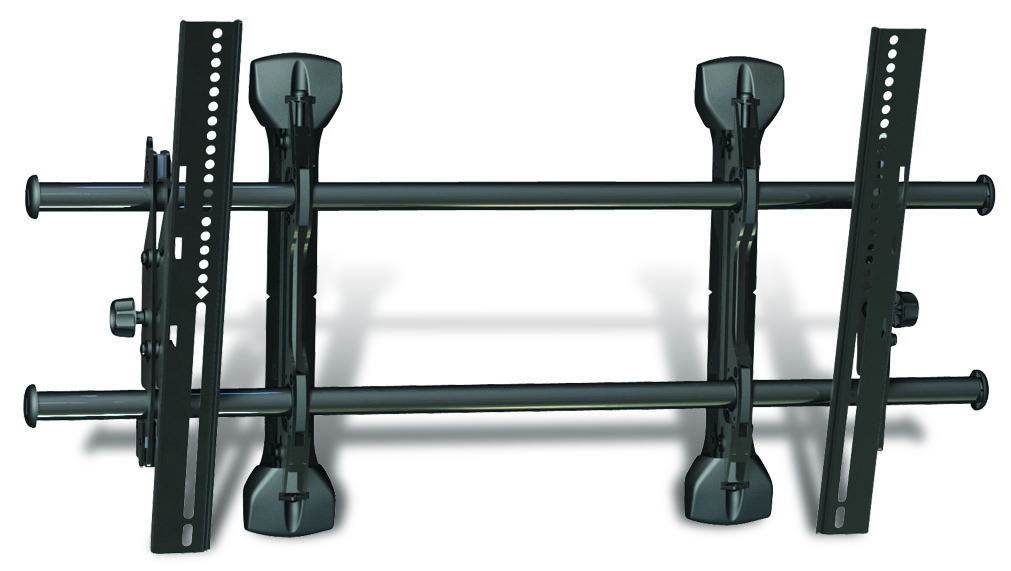How to wall-mount a flat panel TV
The old carpentry adage ‘measure twice, cut once’ is fundamental to the successful installation of a wall-mounted plasma display.
First and foremost, it is important to measure the wall that the screen will be mounted on and work out where the centre of the screen will be located on the wall. Measure out where you want the bottom of the screen to be and with a pencil make a very small mark on the wall that can be easily erased afterwards.
Some people cut a piece of cardboard to the dimensions of their new TV and use it on the wall to get an idea of a good position, this way you get it right the first time.
ADVERTISEMENT
After marking the required position, very carefully lay the screen face down on a soft mat, checking to make sure there is nothing that will touch the screen, or mark or scratch it. Don’t worry, when you lay it face down the plasma or LCD wont leak out. That is a myth.
Next, get your bracket out and there should be two main parts – the part that attaches to the wall (wall bracket) and the part that attaches to the screen, which are usually two long arms. Screw the arms to the back of the screen while ensuring the top and the bottom of the arms are the same distance from the top and the bottom of the screen.
Then, place the wall bracket on top of the arms and push the bracket hard up to the arms imagining it is attached to the wall and gravity is pulling the screen down. Measure the distance from the bottom of the screen to the bottom of the bracket and then add another feint dot to the wall. This will give you the starting point of where to mount the wall bracket.
Using a spirit level or laser level, mark out lines on the wall that will be the bottom and the centre of the bracket plate. Hold the bracket plate on the wall and mark out the holes that are pre-cut or pre-drilled in the bracket. To make sure you are covered for all options I suggest marking out every hole that is available to you.

After marking the required position, very carefully lay the screen face down on a soft mat, checking to make sure there is nothing that will touch the screen, or mark or scratch it. Don’t worry, when you lay it face down the plasma or LCD wont leak out. That is a myth.
For masonry walls I suggest using a 10mm SDS or hammer drill bit and 10mm Dynabolts. Drill four holes and then hold the bracket on the wall and insert the Dynabolts. Do not tighten them until they are all hammered in place.
Tighten the bolts using a shifting spanner or socket set. Always check that the plate is level as you are tightening. If you get a Dynabolt that will not tighten, drill a new hole in one of the other positions you initially marked out.
For gyprock/plaster walls that are timber or metal stud framed I suggest a combination of screws and also Ramset Hits. Try to fix the screws into as many studs as possible. If you are lucky you can drill into two studs, which is ideal. But, if you can only screw into one stud that is still fine, just use Ramset Hits for the other side of the bracket that is not over studs. I will usually double the amount of Ramset Hits to four if I have no stud on one side of the bracket.
If you have no studs I suggest bracing between two studs with a piece of MDF board or plywood then attaching the bracket to that.
Finally, drill or cut holes for the cables to go from the screen to the equipment, hang the screen on the bracket and check for level and stability. Make sure to use any safety locking devices supplied by the bracket manufacturer.
Connect your cables, sit back and relax.
• Often, power outlets are placed adjacent to a stud, and in new houses, studs are generally spaced about 40cm apart. But always check for the stud with a stud finder.
• Don’t mount your flat panel too high. It’s tempting to mount it at picture height, but most people find it more relaxing to watch if the centre of the TV is around seated eye level.
• Invest $20-$30 in a laser level to determine where your wall screws need to go. While a spirit level and pencil will do the job, a laser level is quicker, easier and more reliable.
• If you’re running cables in the wall, buy quality cables to prevent interference from mains wires and other wiring in the walls.
• When drilling into a wall be careful not to drill or screw into any wiring. Certain models of stud finders also include a feature that detects live AC wiring.
• Save money and time by using a surface mount conduit to camouflage the cables between your AV equipment and the TV. This means you won’t have to spend lots of time and money fishing cables or re-plastering at a later date when you need to add new cables.
• You should wire a proper wall outlet for you power source. Other wiring methods such as running an extension cord through the wall do not comply with building codes in most areas, and also pose a fire danger.
• After hanging the mount, and before placing the TV on it, apply some pressure to the mount to ensure it is firmly in place.
• Avoid mounting your screen above a fire place; the heat will expand the wall and may make your plasma fall off.
-
ADVERTISEMENT
-
ADVERTISEMENT
-
ADVERTISEMENT
-
ADVERTISEMENT
